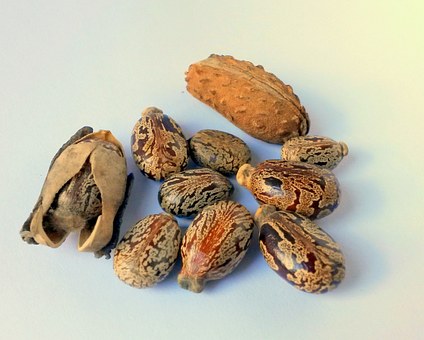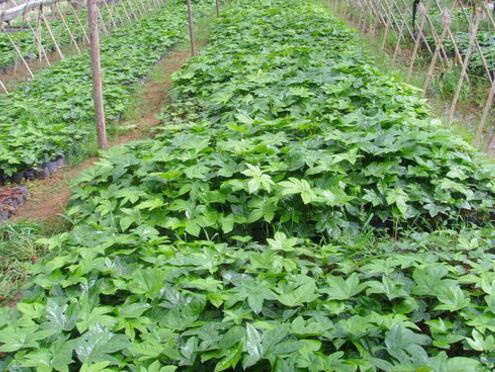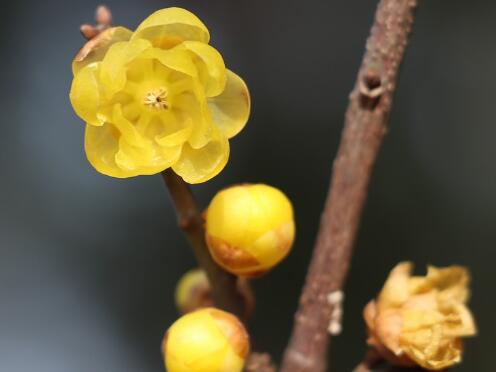How much is the castor seed of Euphorbiaceae per jin? How do you plant it? How is the planting benefit?
Castor, also known as hemp, old hemp and herb, is a common annual or perennial herb in daily life. because of its high oil content, it is used as an important raw material in chemical, mechanical and electrical, metallurgical and other industries. at present, it is planted in many areas. how much is the castor seed? How do you plant it? How is the planting benefit?

The latest price of seeds:
According to the Yulin market, recently there has been a decrease in the number of cargo hunters, mainly in small batches and sporadic demand, due to sufficient supply and active sales, the market is slightly weak; the price of castor beans in Anhui is 7.5-8.5 yuan; Anguo market: the recent market supply is general, the market is still not different from the previous period, the price of castor beans in the current market is 7 yuan Puning market: the attention of merchants is not high, the market supply moves sporadically, the price of castor bean remains flat, and the price of Anhui castor bean is 7.5-8.5 yuan.
Planting techniques:
I. the sowing method of castor
1. Selected seeds: the early mature seeds in the middle of the main ear or the first branch of castor can be selected by the methods of salt selection, grain selection, screening and wind selection, and then the selected seeds are spread out into a thin layer on a sunny day and dried for 2-3 days. Turn 2-3 times a day.
two。 Seed treatment: Castor seeds are disinfected by mixing seeds with paste lime slurry, or 40% formalin and water are used to prepare disinfectant at the ratio of 1 to 300 to wet the seeds evenly and soak them for 3 hours. The seeds were soaked in 45 ℃ warm water for 4 hours or 25 ℃ warm water for 1 day and night 2-3 days before sowing, during which hot water was added to keep the water temperature and stirred 5-6 times. After soaking the seeds, put the seeds in a 25 ℃ greenhouse to promote germination for one day and night, and turn them several times. If you see a broken seed coat, you can sow.
3. Sowing at the right time: the plots with poor soil moisture should sow on April 15-20, and the plots with better soil moisture should be sowed around the end of April with a depth of 5-7 cm. 2-3 tablets per hole and covered with soil after sowing. The sowing density should be reasonably determined according to the characteristics of varieties and local natural conditions. When sowing, if the humidity is high, you should first "dry the soil moisture" and then suppress it when it is "back-dry". When the moisture is moderate or lacking, you can step on the lattice first and stabilize the soil in time after sowing.
II. Key points of field management of castor
1. Inter-seedling fixed seedling: Castor is easy to survive after transplanting at the seedling stage (before 3 true leaves). If you find that there is a lack of seedlings, you should transplant and replenish seedlings in time. The seedlings were fixed when there were 3-4 true leaves, and 1 plant was left in each hole. Set seedlings too late to form weak seedlings, affecting the yield. For those planted on barren hills and slopes, the setting of seedlings can be delayed.
two。 Rational fertilization: Castor used 8-10 kg diammonium per mu as seed fertilizer, applied 6 cm away from the seed, topdressing twice in barren land with less base fertilizer, 15 kg diammonium or ammonium nitrate per mu at fixed seedling stage and ear formation stage, or 7.5 kg urea, apply deeply to 8-10 cm away from the seedling. If the base fertilizer is sufficient, ammonium nitrate can be applied once in the interseedling, 15 kg per mu.
3. Intermediate ploughing and weeding: Castor plants are usually planted once in early June, mid-June and early July, shoveling the ground before the second and third trips, and then putting in an autumn ridge. Wading and topdressing can be combined. Pay attention to timely irrigation in case of drought after wading to ensure the healthy growth of castor.
4. Topping and pruning: when castor plants form 5-6 true leaves, pick off the apical buds of the main stem on a sunny day, then control the number of panicles according to the type of varieties, and remove all the branches that grow only long leaves and are not sturdy when pruning. Pruning can not be interrupted, the number of branches depends on the growth. Another method is to retain the apical bud of the main stem and control the number of remaining ears according to the type of variety.
5. Anti-drought and waterlogging: Castor needs more water at seedling stage and filling stage, irrigation should be carried out in case of drought, timely drainage should be carried out in case of heavy rain after irrigation, and soil water content should be kept at 18-20% during growth period. In case of dry weather, the places with irrigation conditions can be irrigated once before flowering, increase the number of pods per plant and pods, and re-irrigate once in the pod setting period, so as to increase grain weight and prolong flowering time.
Planting benefit analysis:
Generally, the investment per mu is about 100 yuan, and the income per mu is 500-700 yuan. The production benefit is higher by adopting the compound mode, such as raising hemp silkworm, interplanting wheat, potato and so on. Castor, temperature-loving, drought-tolerant, barren-tolerant, saline-alkali tolerant, adaptable and resistant to adversity, and not resistant to flooding. As long as field planting is managed scientifically, remarkable economic benefits can be obtained. Castor is one of the important sources of oil, and the prospect is very considerable.
Now, with the decreasing of oil resources, the search for alternative energy has become an urgent problem for countries all over the world. Castor is a renewable resource, and most of the products obtained from petroleum can be obtained from the deep processing of castor oil. Castor oil is regarded as a potential and renewable "oil" resource by relevant experts. Therefore, popularizing the planting of castor is a strategic choice.
Time: 2019-03-20 Click:
- Prev

How much is the price of star anise gold plate seeds per jin? How to breed it? What are the effects and effects?
Star anise gold plate refers to its palmately shaped leaves, with about 8 lobed leaves, which seem to have 8 horns. Originated in southern Japan, North China, East China and Kunming Garden in Yunnan. It has high ornamental value. So, how much is the seed price of star anise gold plate per jin? How to breed it? What are the effects and effects? It is understood that
- Next

When do the seeds mature? How to grow? How many years to bloom?
Chinese plum alias: gold plum, wax flower, yellow plum blossom. Originated in the middle of China, like the sun, but also slightly shade, more cold, drought, drought does not die of Chinese plum said. Its flowers are fragrant and beautiful, and it is a garden greening plant. When do the seeds mature? How to grow? How many years to bloom? When do the seeds mature?
Related
- Fuxing push coffee new agricultural production and marketing class: lack of small-scale processing plants
- Jujube rice field leisure farm deep ploughing Yilan for five years to create a space for organic food and play
- Nongyu Farm-A trial of organic papaya for brave women with advanced technology
- Four points for attention in the prevention and control of diseases and insect pests of edible fungi
- How to add nutrient solution to Edible Fungi
- Is there any good way to control edible fungus mites?
- Open Inoculation Technology of Edible Fungi
- Is there any clever way to use fertilizer for edible fungus in winter?
- What agents are used to kill the pathogens of edible fungi in the mushroom shed?
- Rapid drying of Edible Fungi

